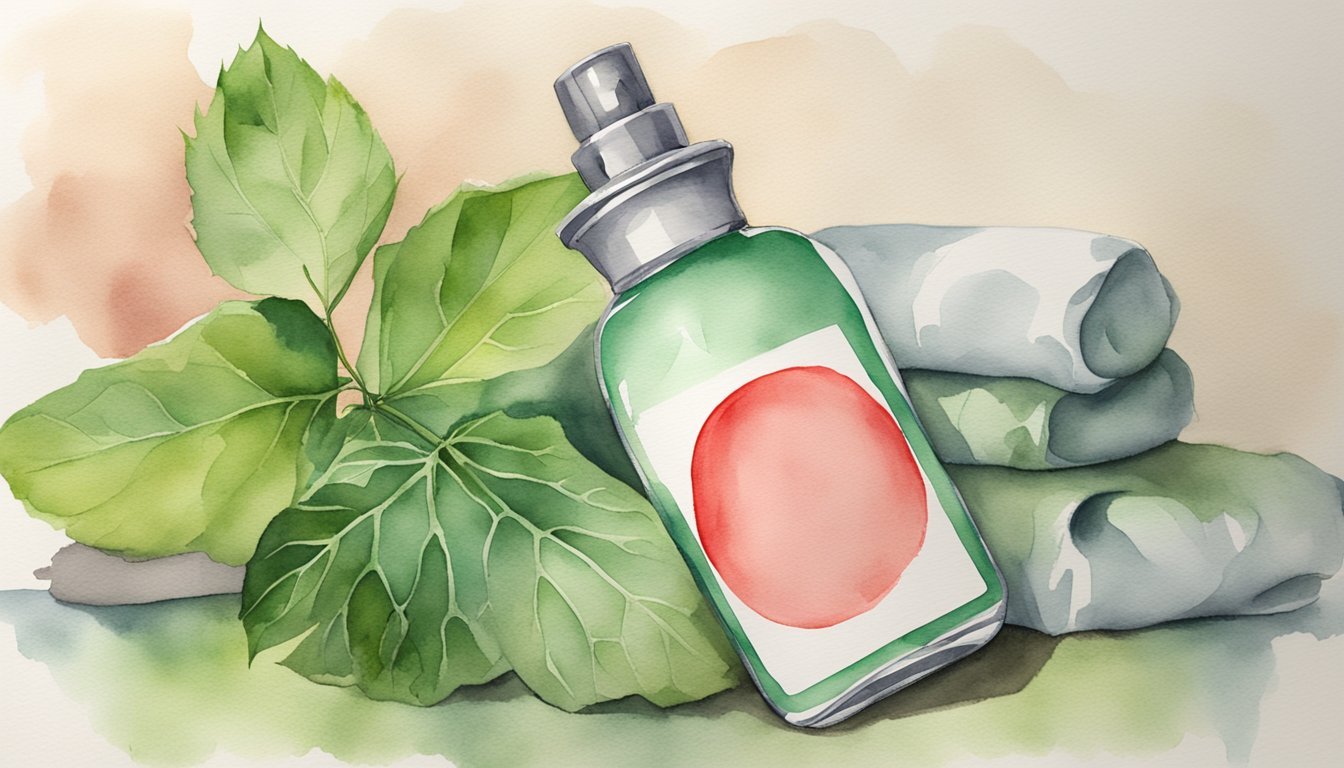Understanding Poison Ivy and Its Effects
Exploring the itchy encounters with poison ivy reveals a tale of nature’s complexity and the human body’s response to it. Here’s a closer look at the notorious plant and the reactions it triggers.
What Is Poison Ivy?
Poison ivy is part of a plant trio which includes poison oak and poison sumac. All three produce an oily resin known as urushiol, a substance highly irritating to human skin. These plants are infamous for their ability to cause itchy and blistering rashes upon contact.
Symptoms of Poison Ivy Exposure
When someone brushes against poison ivy, the contact dermatitis kicks in. The skin’s showdown with urushiol often results in:
- Itching
- Redness
- Swelling
- Blisters
This array of symptoms typically heralds an unwelcome allergic reaction, which varies in severity from person to person.
The Role of Urushiol in Allergic Reactions
Urushiol is the real culprit behind the bothersome symptoms. It latches onto the skin almost invisibly and initiates an immune response. Those who are sensitive to it develop an itchy rash, which can emerge within hours or up to several days after exposure. Most reactions to poison ivy are actually the body’s defense mechanism at play.
For detailed insights into the experimental studies of poison ivy and urushiol’s effects, refer to the sensitization of guinea pigs to poison ivy and the sensitization to poison ivy by injections.
First Aid and Medical Treatment for Poison Ivy
Upon coming into contact with poison ivy, immediate and correct action can help minimize discomfort and prevent severe reactions. The following sections delve into immediate steps, available treatments, and guidance on when professional medical evaluation is necessary.
Immediate Steps After Exposure
The first task is to wash the affected area as soon as possible. Using soap and cool water, one should thoroughly cleanse the skin to remove the plant’s oils that cause the reaction. Clothing or objects that have also contacted the poison ivy should be washed to prevent re-exposure.
Over-The-Counter Options
For many, the rash can be managed with over-the-counter remedies. Calamine lotion and hydrocortisone cream can alleviate itching and inflammation. If itching is severe, antihistamine medications can help to reduce the symptoms. However, care must be taken not to apply any cream on broken skin or open blisters.
When to See a Doctor
If the rash is widespread or involves the face or genitals, it’s time to see a doctor. They may prescribe an oral corticosteroid like prednisone for severe cases. Antibiotics may become necessary if a bacterial infection, indicated by fever, pus, or red streaking, develops.
Prevention and Management Tips

Knowing how to prevent poison ivy exposure and manage the symptoms if they occur is crucial for anyone who enjoys spending time outdoors. The following advice is designed to help you enjoy the great outdoors with less worry about the itchy consequences of an encounter with this pesky plant.
How to Avoid Poison Ivy
The first line of defense against poison ivy is to identify it accurately. Poison ivy typically has three glossy leaves and may have black dots that indicate oxidized urushiol, the oil that causes the rash. When heading outdoors, especially in areas where poison ivy is common, wear long sleeves, pants, boots, and gloves to minimize skin exposure. Gardening enthusiasts should be particularly mindful and wear protective clothing while tending to their plants.
Managing the Itch and Discomfort
When the inevitable happens, and the itchy rash appears, several home remedies can help soothe discomfort. Applying cool, wet compresses to affected areas can provide relief. Bathing in colloidal oatmeal is another effective way to alleviate itchiness. For more widespread reactions, over-the-counter products containing hydrocortisone or antihistamines can help reduce symptoms. However, if the discomfort is unbearable or persists, it’s wise to visit a clinic or consult with doctors.
Preventing Secondary Infections
Scratching poison ivy lesions is certainly tempting but can lead to secondary infections. Keeping fingernails short and clean is a proactive step to prevent bacteria from causing further issues. If the rash becomes infected, it might appear warm, swollen, or pus-filled—this warrants medical attention. Remember, pets can also carry urushiol on their fur, so it’s important to wash them off with gloves after they’ve been outdoors to prevent spreading the oil to humans or other surfaces.
By following these tips, individuals can reduce their chances of a rash and manage symptoms more effectively if they come in contact with poison ivy. Always seek professional medical advice for severe reactions or if you have more questions about prevention and treatment.

